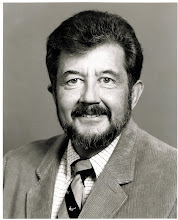And why did the voters react so differently to the Great Recession when they became so angry? In the Great Depression, there was anger at the Republican party in power when the recession started (Herbert Hoover). Starting with the 1932 Presidential election of Franklin Roosevelt, the U.S. went for nine elections with the Democrats in power for seven of them, broken only by the election twice of a hero who picked being a Republican over a Democrat (Gen. Eisenhower). The anger following the Great Recession that also started under a Republican President (George W. Bush); however, was focused on the party in power during the recovery (Barack Obama). My projection is that Barack Obama will eventually be noted for being President during the Great Recovery.
The WSJ has a most interesting presentation on jobs and wages.* All the seven figures presented are very good and I suggest you look at the entire article. Below I'll present two of the figures.
The U.S. economy added 156,000 jobs in December, the unemployment rate was little changed at 4.7% and wages grew at the strongest pace since 2009. Here’s a closer look at how that compares.
Job growth slowed in December, as employers added fewer jobs than economists surveyed by The Wall Street Journal had expected. But it was the 75th straight month of job creation, in the final full month of President Barack Obama’s term. That marked the longest stretch of job growth on record back to 1939.
In the figure, you can see that the employment decline bottomed in 2010 with employment starting to rise in 2012 and picking up steam as the years progressed. The decline in participation rate is not understood and can be only partially explained by retirement of Baby Boomers, the oldest of whom were 54 when the decline started. It started a long time ago in 2000, flattened in 2004-2007 and resumed and steepened during the Great Recession. Note the decline in job participation rate that may be flattening in recent months.
(Click on figure to enlarge**)After wages bottomed in early 2012 they continued to rise slowly. Thus beginning with 2015, wage gains started to increase at a good clip (See figure**); yet the increase did not seem to be felt by voters, nor the media for that matter that continued to comment on the slow recovery.

(Click on figure to enlarge.**)
* http://www.cnbc.com/2017/01/06/unemployment-rose-in-december-but-a-more-realistic-rate-is-even-higher.html
** http://blogs.wsj.com/economics/2017/01/06/the-december-jobs-report-in-seven-charts/
*** http://www.cnbc.com/2017/01/05/us-weekly-jobless-claims-dec-31-2016.html


No comments:
Post a Comment